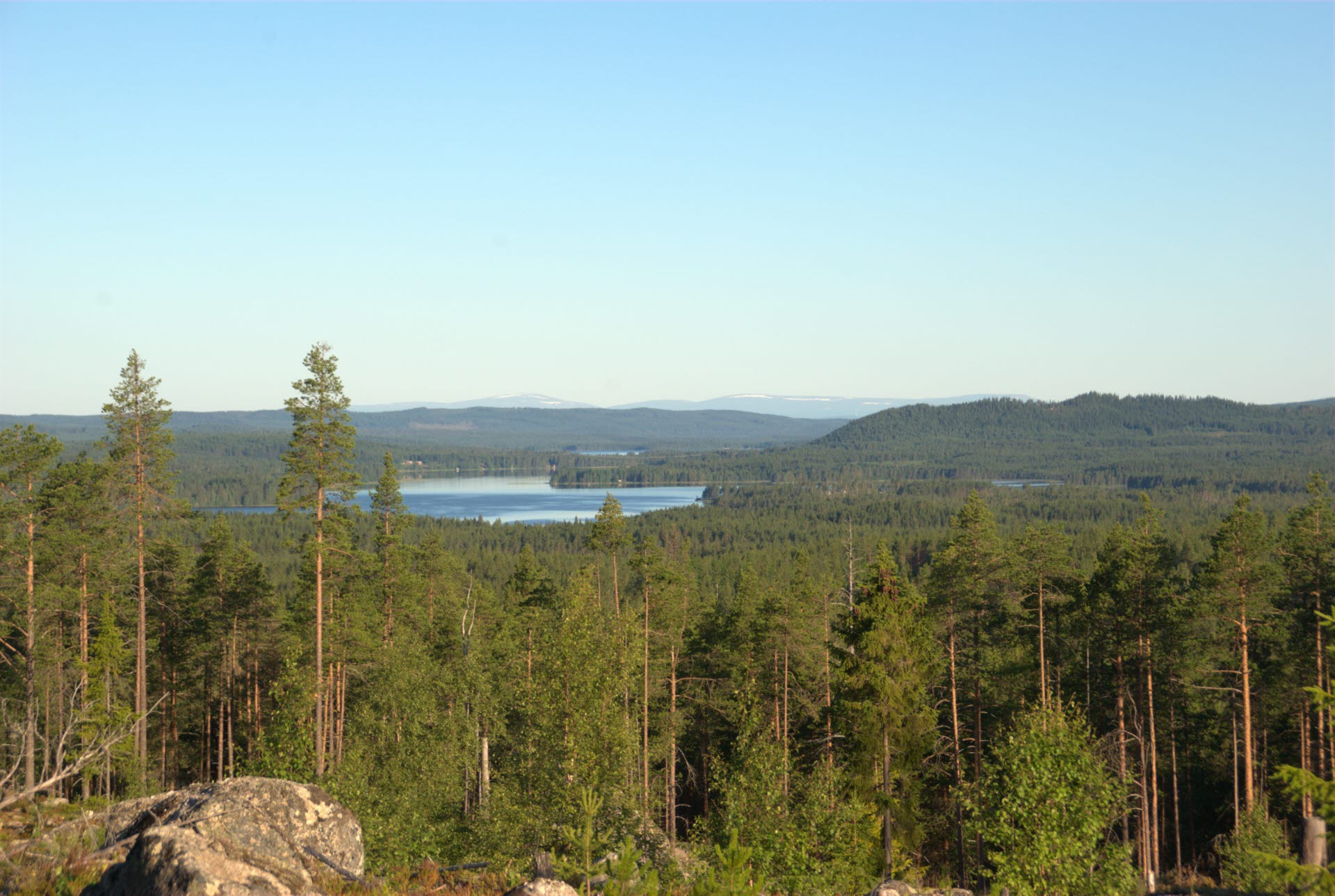
SCA designates landscapes for endangered species
- News
- Forest
- Sustainability
SCA has designated ten Action Plan (Sw. Åtgärdsprogram or ÅGP) landscapes that contain concentrations of species with particular requirements and are included in special action plans. The approximately 30 ÅGP species are also on SCA’s list of protected species. “Simply put, this is about doing the right thing at the right location. We are now raising our level of ambition in relation to nature conservation measures in both forests with nature conservation targets and in forests with production targets,” says Anna Cabrajic, forest ecologist at SCA.
SCA has already identified 203 red-listed species, or protected species, which live in our forests but are adversely impacted by forestry. Some thirty of these are particularly demanding and sensitive, and are therefore included in the national action plan established by the Swedish Environmental Protection Agency.
“These species are having a very hard time. They depend on very old deciduous and pine forests shaped by disturbances arising from forest fires that occurred in the past. Suitable habitats are now generally small and remote from one another, and the habitats also deteriorate over time as these disturbances no longer take place given that forest fires are rare,” says Anna.
The right thing at the right location
The ambition is now to mobilize resources to benefit particularly demanding ÅGP species. This is why SCA has created ten ÅGP landscapes around known concentrations of these species.
“For us, it is important that we do the right thing at the right location We can now focus measures where they provide most benefits, and for example create burnt wood or large concentrations of dead deciduous trees where the species actually live. This improves the quality and precision of our measures.
In the ÅGP landscapes, our measures are targeting older forests with conservation values where the species live and nearby younger productive forests, to improve the long-term outlook for the species.”
“We need both types of forest. Habitats already inhabited by the particularly demanding species usually need improving through conservation measures. We then need to recreate new habitats and substrates in younger forest nearby and this work starts when the forests are cleared and thinned. Thanks to SCA’s large landholding, it is possible for us to develop conservation values in our younger productive forests adjacent to areas with a known presence of ÅGP species in older forests,” says Anna.
Work will focus on initiatives in landscapes with pine and deciduous forest containing habitats and substrates that are highly important for these species. This concerns species dependent on aspen, such as Megamerinidae, Collema subnigrescens and Xyletinus tremulicola and stephanopachys linearis dependent on burnt and/or pine trees such as Acmaeops marginata and Corticeus fraxini. Most of the species are insects, though there are also a few fungi and lichen.
“By promoting these ÅGP species, we expect to also favor a number of our other protected species, as they can also benefit from our measures,” says Anna.
Cooperation with others
In total, SCA owns almost 90,000 hectares of forest land in the ÅGP landscapes, and a further 8,000 hectares in nearby nature reserves.
“The idea is that we will cooperate with county administrative boards and their work with forestry measures in the reserves. Approximately 30,000 hectares of forest land in these areas is owned by other private forest owners. Eventually, these owners may also want to contribute towards biodiversity through initiatives in their own forests,” Anna points out.
Various measures
SCA is planning to carry out conservation measures in older forest where the species need it.
“We will concentrate on measures such as prescribed burning, removing competing spruce trees, damaging pine trees to mimic fire damage and creating new dead wood,” says Anna and continues:
“In the younger forests in our ÅGP landscapes, which are inhabited by species dependent on deciduous trees, we will save and promote deciduous trees in general during both thinning and pre-commercial thinning. The aim is to recreate mainly deciduous forests. During final harvesting of forest that does not have particular conservation values, we will save all aspen and most deciduous trees.
In ÅGP landscapes with species dependent on pine, SCA will promote future conservation pine trees already during the pre-commercial thinning stage by clearing around them and damaging the base of the trunk to mimic damage caused by fire.”
“This results in a special quality of wood on which many pine-loving species are dependent and is very important for biodiversity. The measures will be carried out using machines and manual procedures, such as chainsaws,” explains Anna.
Long-term initiative
Work with the ÅGP landscapes is a long-term initiative.
“We have only just started and it will take a few years before the landscapes are fully functional. It is a dilemma that it takes so long to create suitable habitats and substrates, but we have to start somewhere and see where this leads us. Our current focus is on testing different working approaches and procedures by carrying out various measures. Later on, when we know more about the type of measures that are effective, we can share our knowledge and help other forest owners who also want to adapt their forestry measures to benefit threatened species,” concludes Anna.